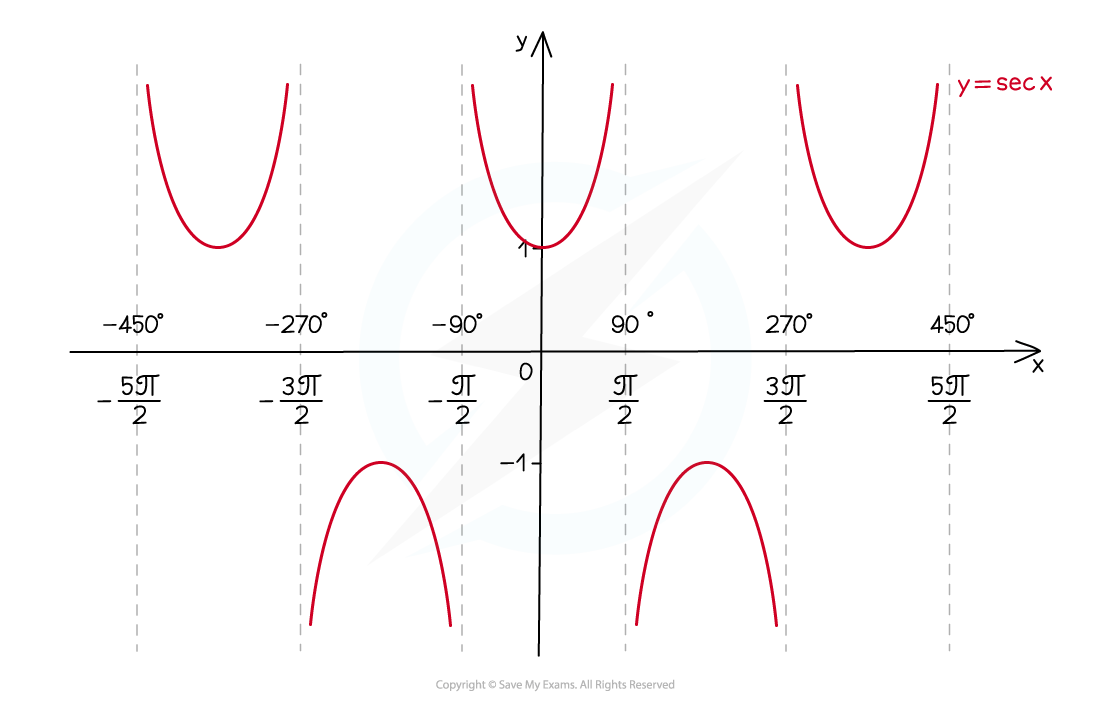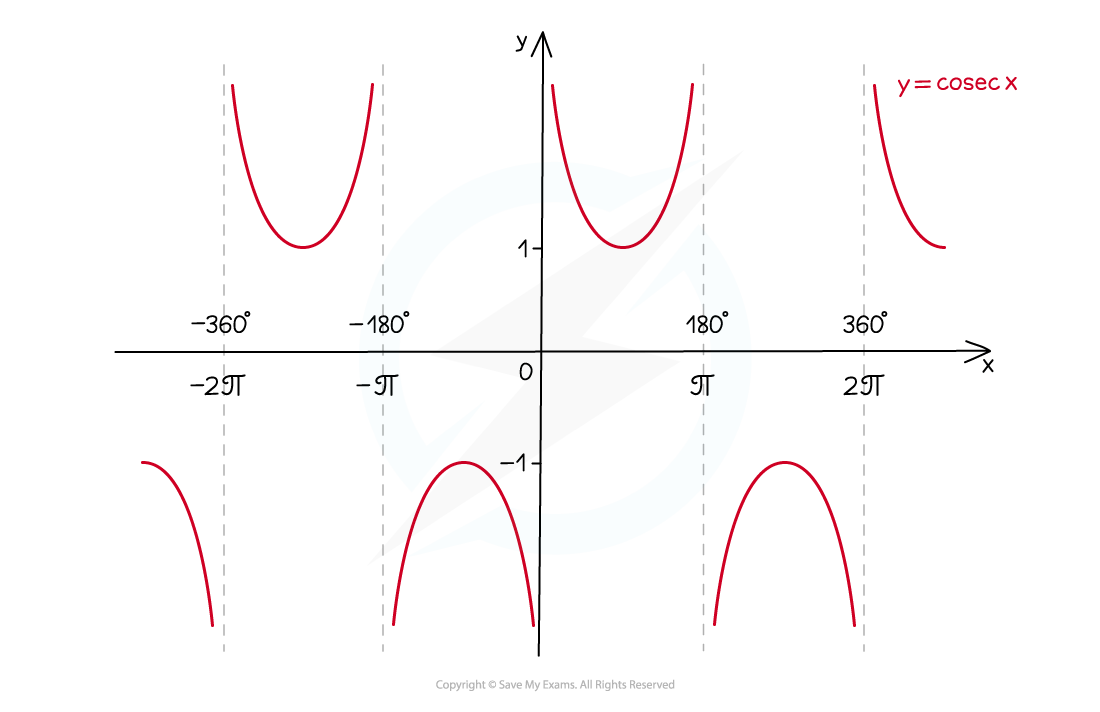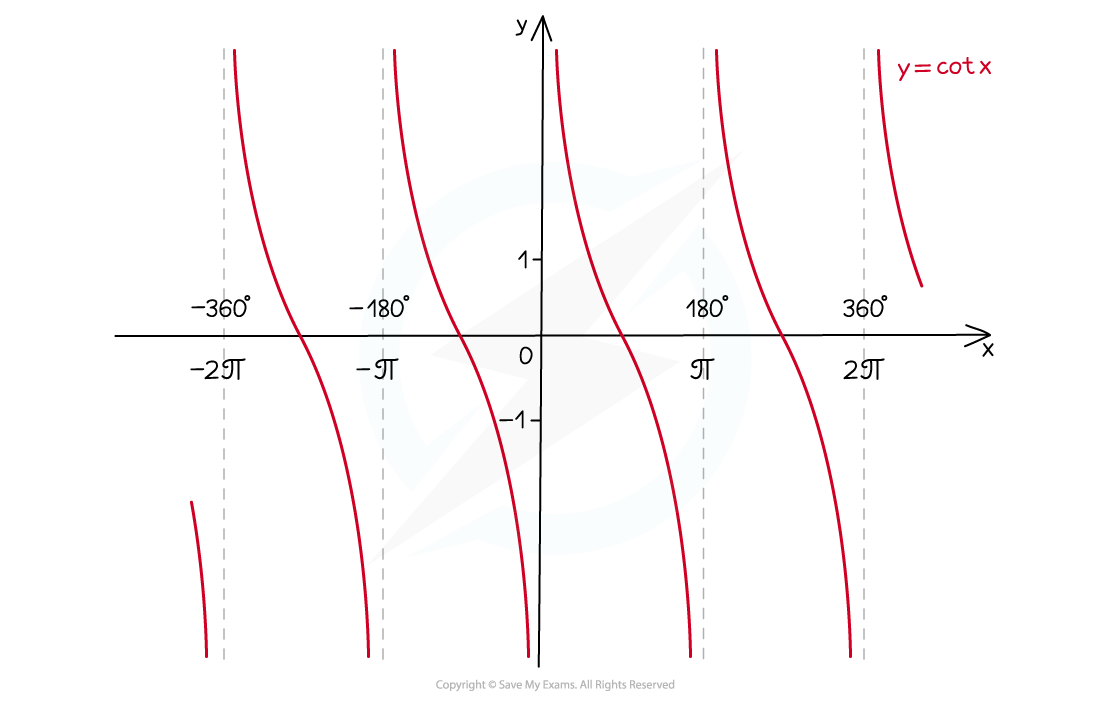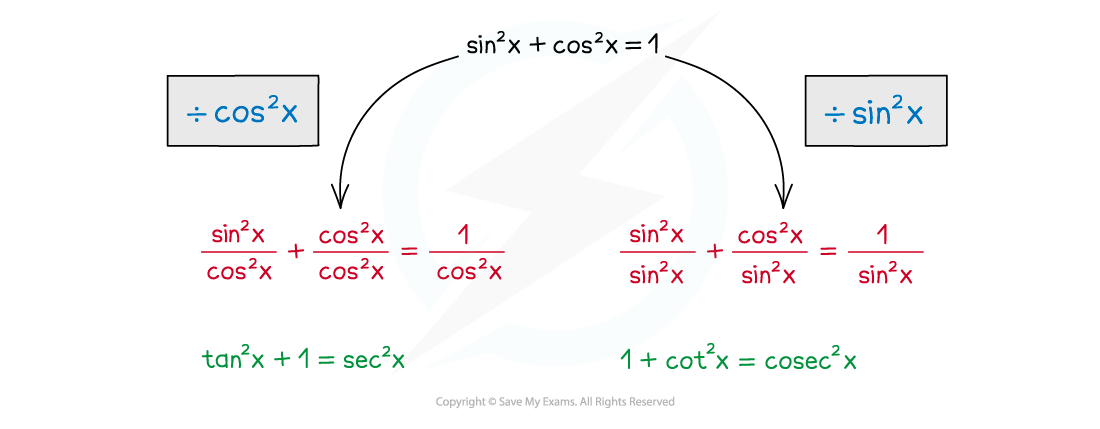Reciprocal Trigonometric Functions (DP IB Analysis & Approaches (AA)): Revision Note
Reciprocal trig functions
What are the reciprocal trigonometric functions?
There are three reciprocal trig functions correspond to either sin, cos or tan
Secant is the reciprocal of the cosine function
Cosecant is the reciprocal of the sine function
Cotangent is the reciprocal of tangent function
Examiner Tips and Tricks
You are given sec and cosec in the formula booklet. A good way to remember which function is which is to look at the third letter in each of the reciprocal trig functions. For example, cot is the reciprocal of tan.
Another formula for cot is
It is just the reciprocal of the tan formula
Examiner Tips and Tricks
Be careful not to confuse the reciprocal trig functions with the inverse trig functions. .
What do the graphs of the reciprocal trig functions look like?
y = secx
The y-axis is a line of symmetry
It has a period of 360° (2π radians)
There are vertical asymptotes wherever
If drawing the graph without the help of a GDC it is a good idea to sketch cos x first and draw these in
The domain is all x except odd multiples of 90° (90°, -90°, 270°, -270°, etc.)
in radians this is all x except odd multiples of π/2 (π/2, - π/2, 3π/2, -3π/2, etc.)
The range is y ≤ -1 or y ≥ 1

y = cosecx
It has a period of 360° (2π radians)
There are vertical asymptotes wherever
If drawing the graph it is a good idea to sketch sin x first and draw these in
The domain is all x except multiples of 180° (0°, 180°, -180°, 360°, -360°, etc.)
in radians this is all x except multiples of π (0, π, - π, 2π, -2π, etc.)
The range is y ≤ -1 or y ≥ 1

y = cotx
It has a period of 180° or π radians
There are vertical asymptotes wherever
The domain is all x except multiples of 180° (0°, 180°, -180°, 360°, -360°, etc.)
In radians this is all x except multiples of π (0, π, - π, 2π, -2π, etc.)
The range is y ∈ ℝ (i.e. cot can take any real number value)

Examiner Tips and Tricks
If you need to draw one of these graphs without a GDC, then it is a good idea to draw the trig graph related to it. For example, draw before drawing
.
How do I solve equations using reciprocal trig?
If there is only one type of reciprocal trig function
Isolate it
e.g.
Take the reciprocal of both sides
e.g.
If there is more than one type of reciprocal trig function
Replace the reciprocal trig terms with their identities
e.g.
can be written as
Worked Example
Without the use of a calculator, find the values of
a)
Answer:

b)
Answer:

Pythagorean identities
What are the Pythagorean Identities?
You know the Pythagorean identity
There are two further Pythagorean identities
Examiner Tips and Tricks
Both of these identities are in the formula booklet.
How do I derive the Pythagorean Identities?
You can derive the identities using
Dividing all the terms by
gives
Dividing all the terms by
gives

How do I solve equations using the Pythagorean Identities?
Use the Pythagorean identities if your equation contains either:
sec and tan and at least one is squared
or cosec and cotan and at least one is squared
You might need to rearrange the identities
Examiner Tips and Tricks
Always check if you can use the Pythagorean identities first before using the reciprocal identities. Otherwise, you end up writing everything in terms of sin and cos which takes longer.
Worked Example
Solve the equation in the interval
.
Answer:


Unlock more, it's free!
Did this page help you?